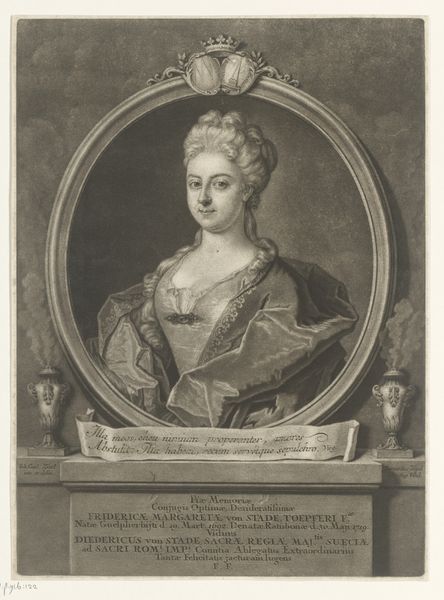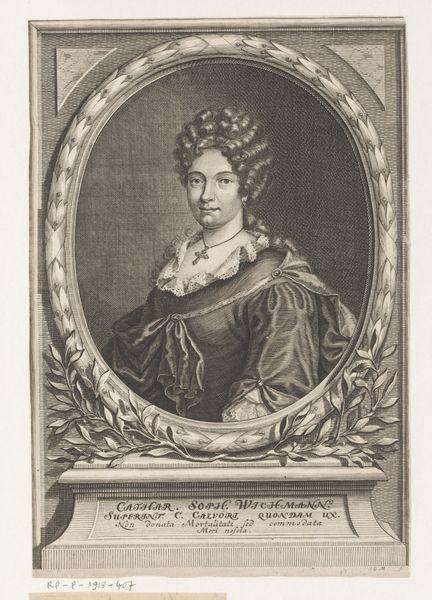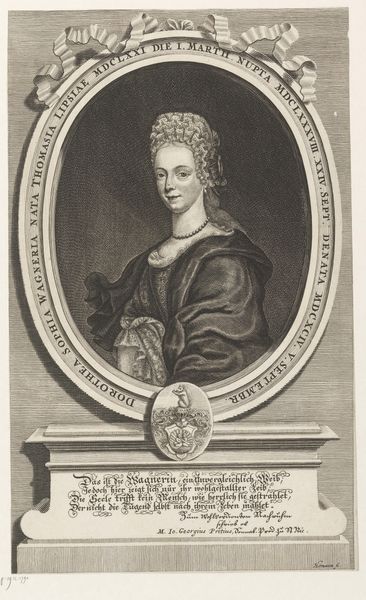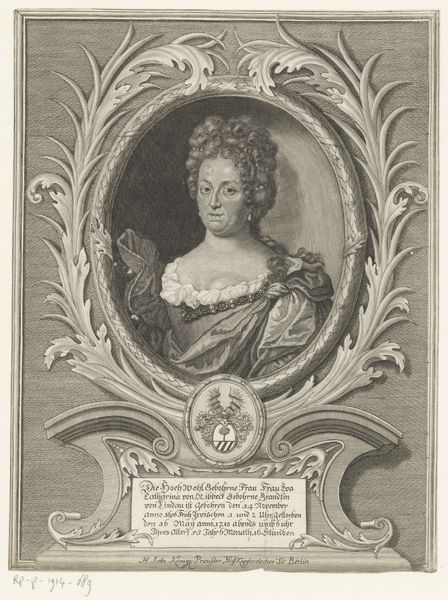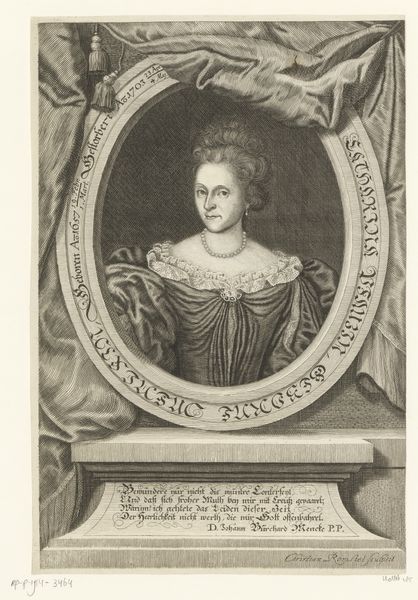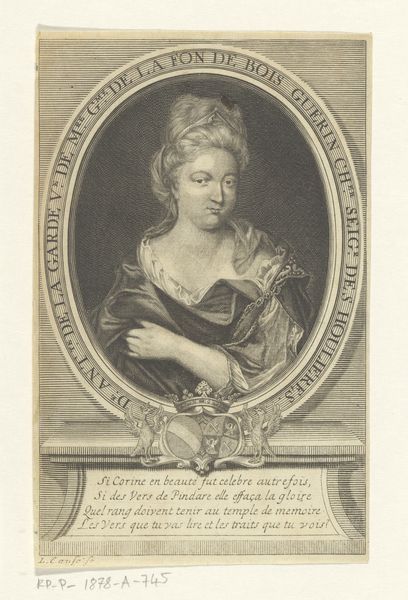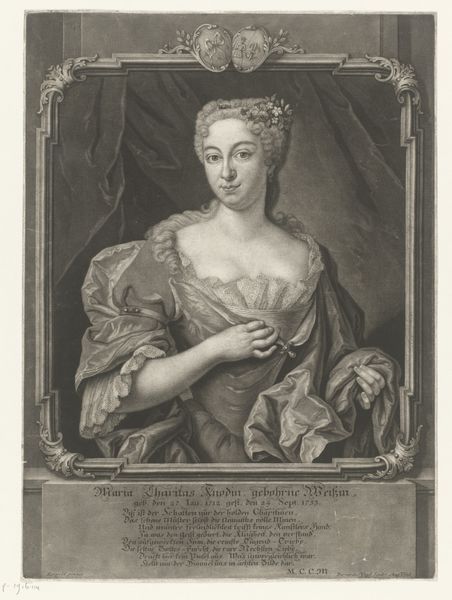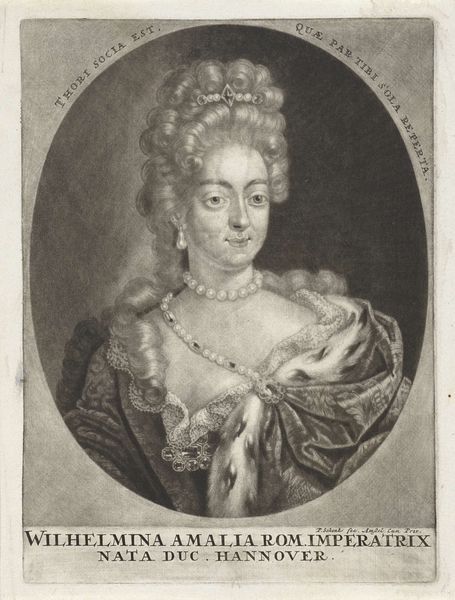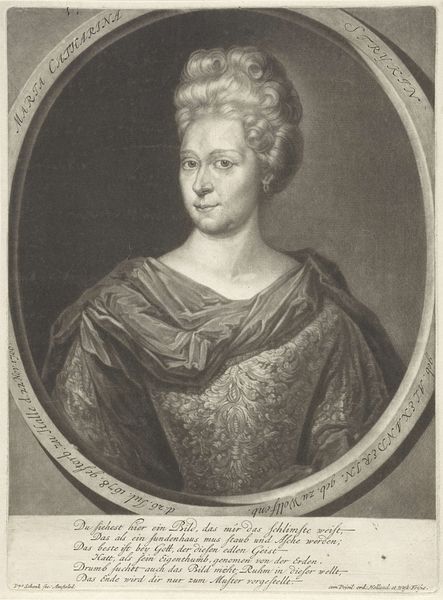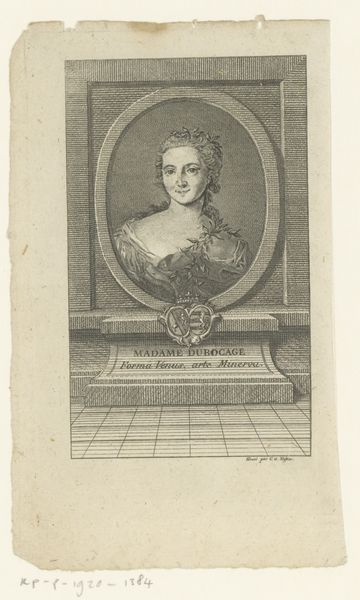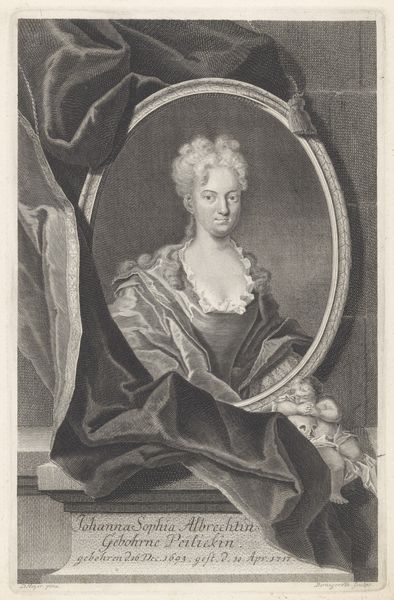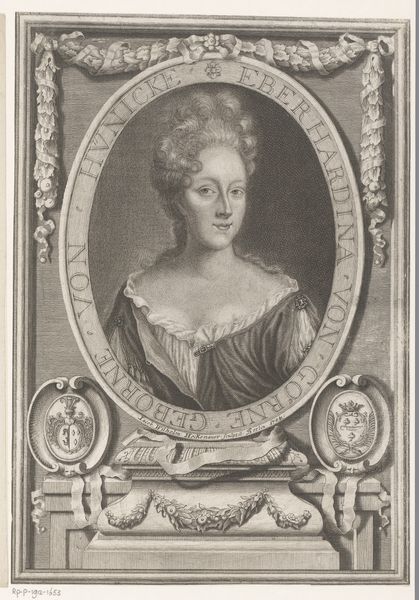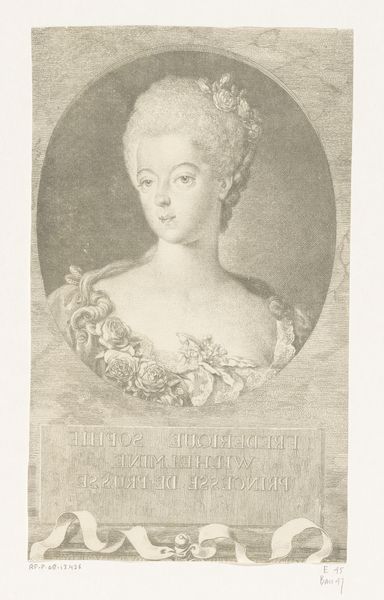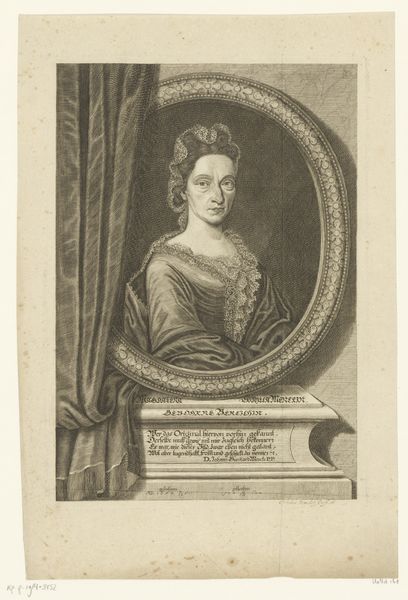
engraving
#
portrait
#
baroque
#
history-painting
#
academic-art
#
engraving
#
miniature
Dimensions: height 316 mm, width 206 mm
Copyright: Rijks Museum: Open Domain
Editor: So, this is "Portret van Agatha Wilhelmina Züllich" by Johann Kenckel, created sometime between 1717 and 1722. It's an engraving and quite small, almost like a miniature. I’m struck by how formal and contained the portrait feels. What do you see in this piece? Curator: I see the echoes of a bygone era, etched in lines and form. Engravings like this weren't merely replications; they served as visual mnemonic devices. Think about the oval frame - it confines her, yes, but also elevates her, placing her within a classical, almost architectural, setting. It whispers of status and permanence. Editor: Mnemonic devices? That's interesting. Can you tell me more? Curator: Certainly. Consider the text below the portrait. It's not just a name and dates; it’s a carefully crafted inscription, intended to fix her virtues in memory. “Moribus innocuus, facie pietate decora...” Her innocence, her piety... these are the qualities they wanted posterity to remember. The image reinforces the inscription, and vice versa. How does that relationship resonate with you? Editor: It makes me think about how constructed these images were, how deliberately they curated someone’s memory. Almost like an idealized brand, back then! It makes the portrait feel less personal and more like a representation of societal values. Curator: Precisely! And that's the power of images, isn’t it? To shape, reflect, and ultimately, preserve cultural memory. Engravings like this were like circulating currency, disseminating specific ideals to a wider audience, ensuring the continuation of certain values through generations. Editor: That’s a great way to look at it. It makes you think about what visual 'currencies' we're creating today.
Comments
No comments
Be the first to comment and join the conversation on the ultimate creative platform.
